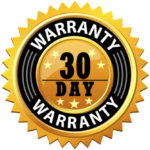What are channelizing devices?
The Manual for Uniform Traffic Control Devices (MUTCD) defines channelizers as “devices that are used to temporarily guide traffic on public roads”. The function of channelizing devices is to warn road users of conditions created by work activities in or near the roadway and to guide road users.
What is the purpose of channelizing devices?
Channelizing devices are most often used to guide traffic, divide traffic lanes where two or more lanes may be open in the same direction, and also to divide traffic lanes moving in opposite directions.
Channelizing devices are also used to warn of conditions created by work activities in or near the roadway and to guide roadway users. These devices are also used to restrict pedestrian access or guide pedestrians around a work area.
What are some types of channelizing devices?
These devices include –
- Cones,
- tubular markers,
- vertical panels,
- drums,
- barricades and
- temporary raised islands.
Channelizing Devices Standards and Options
Each of these devices has a set of standards and options associated with its design and usage.
For example, traffic cones need to be 18 inches tall with no retroreflective collars or 24 inches tall with two retroreflective collars, or 36 inches tall with three retroreflective collars depending upon where they will be used. The recommended standard color for cones is orange. However, frequently seen are yellow cones. And a variety of other colors are available.
For another example, Tubular Markers can be 18 inches tall and 2 inches wide in some uses. However, if they are used on freeways and other high-speed highways, They need to be a minimum of 28 inches tall.
Crash Testing
FHWA policy requires that all roadside appurtenances such as traffic barriers, barrier terminals and crash cushions, bridge railings, sign and light pole supports, and work zone hardware used on the National Highway System meet the crashworthy performance criteria contained in the National Cooperative Highway Research Program (NCHRP) Report 350, “Recommended Procedures for the Safety Performance Evaluation of Highway Features.”
The structural design of the Flex-Safe Folding Barricades and Safety Barriers has been approved by the Federal Highway Administration (WZ-212) for use on the National Highway System.
Standards and Options
The Manual on Uniform Traffic Control Devices – Section 3F.02 is a good starting point to review the standards and options for these types of devices.


